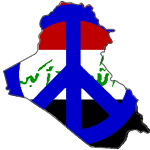a priest's musings on the journey
Thursday, May 03, 2007
| koinobori1.mp3 |
Japanese children singing Koinobori

During my senior year in seminary, I finished my courses early so that my (then) wife and son, Zachary, could spend a month in Japan visiting family and friends. We arrived in late April; I still remember the endless rows of flying carp kites and windsocks that were dancing in the wind and floating in the rivers, literally everywhere. They were strung across rivers, hung out of windows, and flown from poles which had been erected in each yard. I was as taken with these colorful kites as my Zachary was.
The long koinobori (carp) flew in celebration of Boy's Day (May 5). A koi is flown for every son in the family, each flying under a large koi that represents the father. The carp has become the symbol of the Boys' Festival because the Japanese consider it the most spirited of fish, so full of energy and power that it can fight its way up swift-running streams and cascades. Because of its strength and determination to overcome all obstacles, it stands for courage, determination, perseverence, and the ability to overcome obstacles in order to attain one's goals. The carp is an appropriate symbol for the strength of character that the Japanese desire to inculcate in their children. They also symbolize wishes for a long and healthy life, since koi, known for their longevity, can live for more than fifty years.

When we arrived at my in-laws' home, koi had been strung up for both Zachary and me, and the house had been decorated with bamboo and samurai dolls- one of which had been Zachary's great-grandfather's and was to be handed down to Zachary, since he was the firstborn male grandchild. Unlike the contemporary gogatsu-ningyo, which often show a playful boy dressed in a samurai costume and riding a koi, this family heirloom depicted a traditional samurai, sword drawn and poised for battle. In spite of my pacifist inclinations, I could not help but be excited about this connection to Zachary's cultural history; and, it has become for me a symbol of the qualities from the Japanese culture that I want to see developped in my son; the quiet strength of the Japanese people, the committment to harmony and balance, the willingness to incorporate the giftedness of other cultures into one's own lifestyle are all traits that I also desire to see in my son.
I also find the historic ritual from which the giving of gogatsu-nungyo evolved to be a beautiful one. In ancient times, the samurai would hand down his Yoroi(armor) and Kabuto (headpiece) to his son with a blessing which passed on his spirit to his son. Now, the samurai dolls or replicas of the armor and headgear are passed down, continuing one's connection to one's ancesters. (Dare I compare this to the relics of the saints that some of us Christians venerate to remind us of our participation on the community of saints that transcends time and space, and unites all in God in Christ).
The boys day holiday is filled with images that recall the strength of the samurai and the ritual of passing the spirit of strength on to sons. Children create samurai hats out of newspaper and wear them. (It took me a while, but I finally learned how to fold it the correct way; since Zachary's objii-chan and
obaa-chan (grandparents) are a world away, I had no choice to but to practice until I got it.) Homes are also decorated with iris', whose long stems are symbolic of the samurai's sword. It is also traditonal to bathe in a hot bath filled with iris leaves in order to ward off evil spirits.
So, now I'm out to raise our koinobori, dust off the old samurai (and the cuter, non-violent version that we purchased in Tokyo)and head out to the asian market in search of mochi (sweet rice cakes filled with red bean paste and wrapped in oak leaves)and shobu (iris').
:: posted by Padre Rob+, 4:45 AM
2 Comments:
Happy Belated Boy's Day!
O not belated it's the 5th :) Just like Christmas, the decorations go up well before the actual day lol


